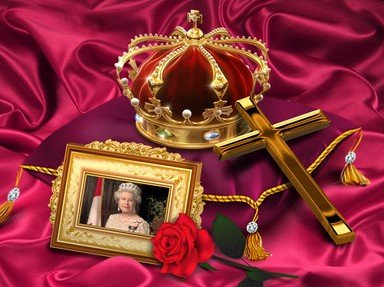Quiz Answer Key and Fun Facts
1. Born around 1056, before his father completed his famous conquest of England, William Rufus inherited the kingdom in 1087 and became King William II. What event caused the abrupt end of his reign in 1100?
2. William Adelin was the only legitimate son of King Henry I and his untimely death in a maritime disaster in 1120 ultimately plunged England into nearly 20 years of civil war. What was the name of the vessel in which William perished?
3. One English prince named William was the first-born son of King Henry II and the elder brother of King Richard I and King John. Although he didn't get to sit on the throne himself because he died at the age of two, he did hold what other title?
4. Prince William, Duke of Gloucester - the only child of Queen Anne to survive infancy - was the last Protestant heir to the throne under the rules set out by the 1689 Bill of Rights. How old was he when his death in 1700 plunged the country into a succession crisis?
5. At which battle, that took place near Inverness in the Scottish Highlands, did Prince William Augustus, Duke of Cumberland famously put down the Jacobite Rising of 1745?
6. Prince William Henry, Duke of Gloucester and Edinburgh annoyed his elder brother King George III after the Royal Marriages Act of 1772 forced him to admit that he had secretly married a lady named Maria Walpole in 1766. Why was his choice of bride considered unsuitable?
7. Prince William, Duke of Clarence became King William IV in 1830, but his initial popularity with the public suffered a serious blow thanks to his role in which event of 1832?
8. His Highness Prince William Frederick - a great-grandson of King George II - was born on January 15th, 1776 in Rome. He eventually got an 'upgrade' and became His Royal Highness in 1816. What event caused his rise up the royal hierarchy?
9. Prince William of Gloucester, a grandson of King George V, was killed in a plane crash in 1972. Which disease associated with the British royal family had he been diagnosed with a few years earlier?
10. Prince William, who became second in line to the British throne on his birth in 1982, was a helicopter pilot in the Royal Air Force from 2010 to 2013. What new job did he take up in 2015?
Source: Author
Fifiona81
This quiz was reviewed by FunTrivia editor
bloomsby before going online.
Any errors found in FunTrivia content are routinely corrected through our feedback system.


